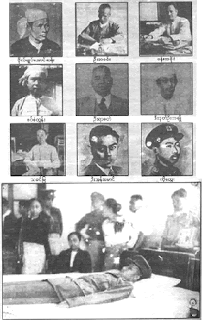A country’s schools system is supposedly guided by a national
education policy. As is true for any policy, education should have
clearly stated goals. So what should be the goals if we are to reform,
or rather establish, a new education policy in Burma?
Since President Thein Sein came into power in 2011, Burma’s education system has been seen, appropriately so, as one of the essential areas for developing trust and understanding between the country’s diverse ethnicities, including the majority Burman. That is, the goals for education in Burma should extend well beyond fulfilling the need for human resources and a skilled workforce.
Particularly for a multi-ethnic society such as Burma, the main purpose of education should include promoting national unity through reconciliation, ensuring equity of access to learning and encouraging a culture of inclusion and mutual respect. And this must be clearly defined at the national level.
Although the term “national unity” has always been the slogan of Burma, almost all previous governments practiced a policy of “non-disintegration of the Union” through forced assimilation and with no consideration whatsoever for equity and inclusiveness in the context of a multi-ethnic society.
This very lack of recognition or respect for cultural and linguistic differences has, to a large extent, deepened the distrust between the Burman and different ethnic minorities.
So far, Thein Sein and his reform efforts—at least on the economic front—have impressed the international community. However, real and substantive change is yet to be seen in the education sector.
Hitherto, sources of division in the schools system remain, including language. Not only are classes at all levels of education taught in the majority Burmese language, but there is no provision that allows ethnic languages to be taught in any government schools.
If the government is serious about reform and willing to build sustained national reconciliation through education, it will need to address the language issue in a national education policy. Waiting for myriad ethnic minorities to begin demanding their right to teach and be taught in their own language will only make the reform efforts more difficult.
The education policy issue is so sensitive politically that it must be addressed with care and consensus at the national level. Perhaps, this is where the Parliament (or Hluttaw) will have to play an important role.
The immediate need is to develop a set of guiding principles and goals that are acceptable to the peoples of Burma as a whole, and will collectively allow them to maintain and promote their social, economic and political development as a multi-ethnic nation.
To show that it understands and respects the nature of multi-ethnic society, the government should immediately initiate a national education reform agenda. It should seek advice from a broad spectrum of professionals and build consensus at all levels of society in doing so.
Only with national efforts towards establishing a representative education policy will Burma be able to build a schools system that not only produces a skilled workforce but also fosters a learning environment where collective ethnic identities are recognized under the broader umbrella of being Burmese citizens.
Since President Thein Sein came into power in 2011, Burma’s education system has been seen, appropriately so, as one of the essential areas for developing trust and understanding between the country’s diverse ethnicities, including the majority Burman. That is, the goals for education in Burma should extend well beyond fulfilling the need for human resources and a skilled workforce.
Particularly for a multi-ethnic society such as Burma, the main purpose of education should include promoting national unity through reconciliation, ensuring equity of access to learning and encouraging a culture of inclusion and mutual respect. And this must be clearly defined at the national level.
Although the term “national unity” has always been the slogan of Burma, almost all previous governments practiced a policy of “non-disintegration of the Union” through forced assimilation and with no consideration whatsoever for equity and inclusiveness in the context of a multi-ethnic society.
This very lack of recognition or respect for cultural and linguistic differences has, to a large extent, deepened the distrust between the Burman and different ethnic minorities.
So far, Thein Sein and his reform efforts—at least on the economic front—have impressed the international community. However, real and substantive change is yet to be seen in the education sector.
Hitherto, sources of division in the schools system remain, including language. Not only are classes at all levels of education taught in the majority Burmese language, but there is no provision that allows ethnic languages to be taught in any government schools.
If the government is serious about reform and willing to build sustained national reconciliation through education, it will need to address the language issue in a national education policy. Waiting for myriad ethnic minorities to begin demanding their right to teach and be taught in their own language will only make the reform efforts more difficult.
The education policy issue is so sensitive politically that it must be addressed with care and consensus at the national level. Perhaps, this is where the Parliament (or Hluttaw) will have to play an important role.
The immediate need is to develop a set of guiding principles and goals that are acceptable to the peoples of Burma as a whole, and will collectively allow them to maintain and promote their social, economic and political development as a multi-ethnic nation.
To show that it understands and respects the nature of multi-ethnic society, the government should immediately initiate a national education reform agenda. It should seek advice from a broad spectrum of professionals and build consensus at all levels of society in doing so.
Only with national efforts towards establishing a representative education policy will Burma be able to build a schools system that not only produces a skilled workforce but also fosters a learning environment where collective ethnic identities are recognized under the broader umbrella of being Burmese citizens.





